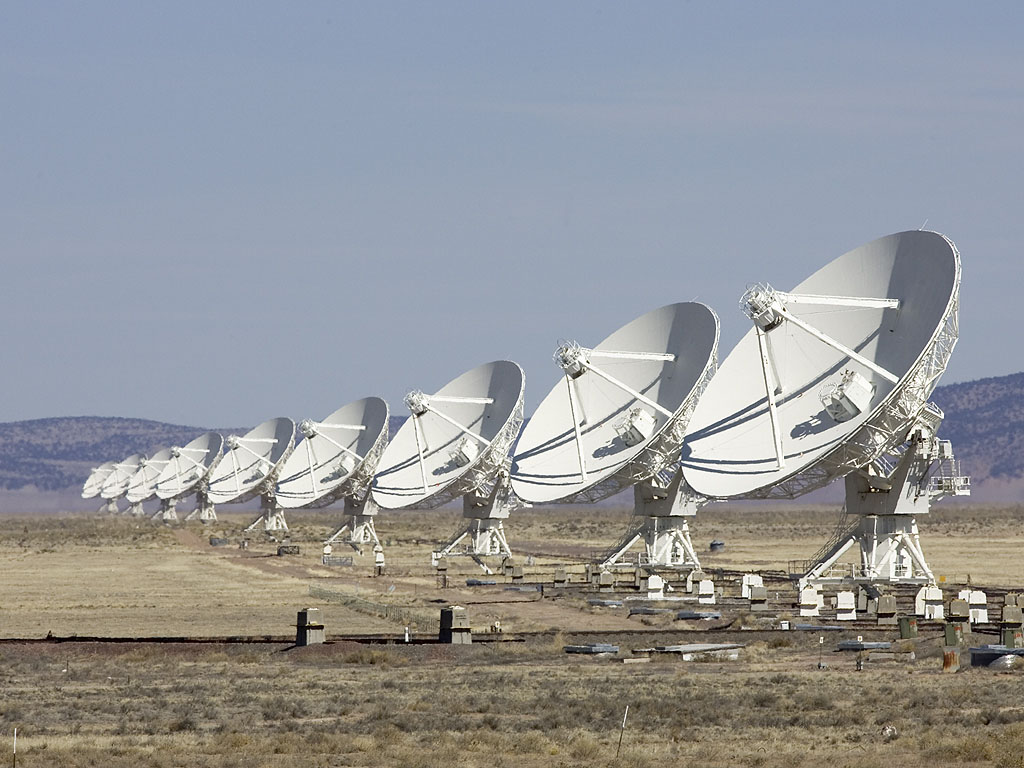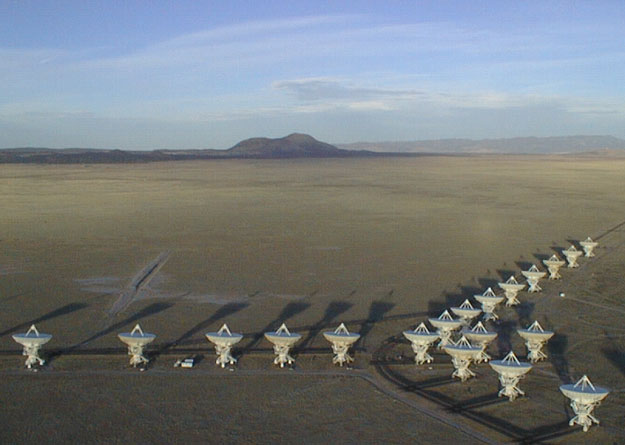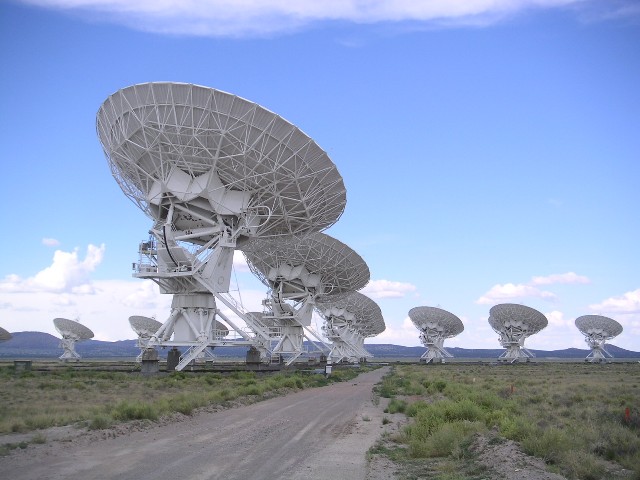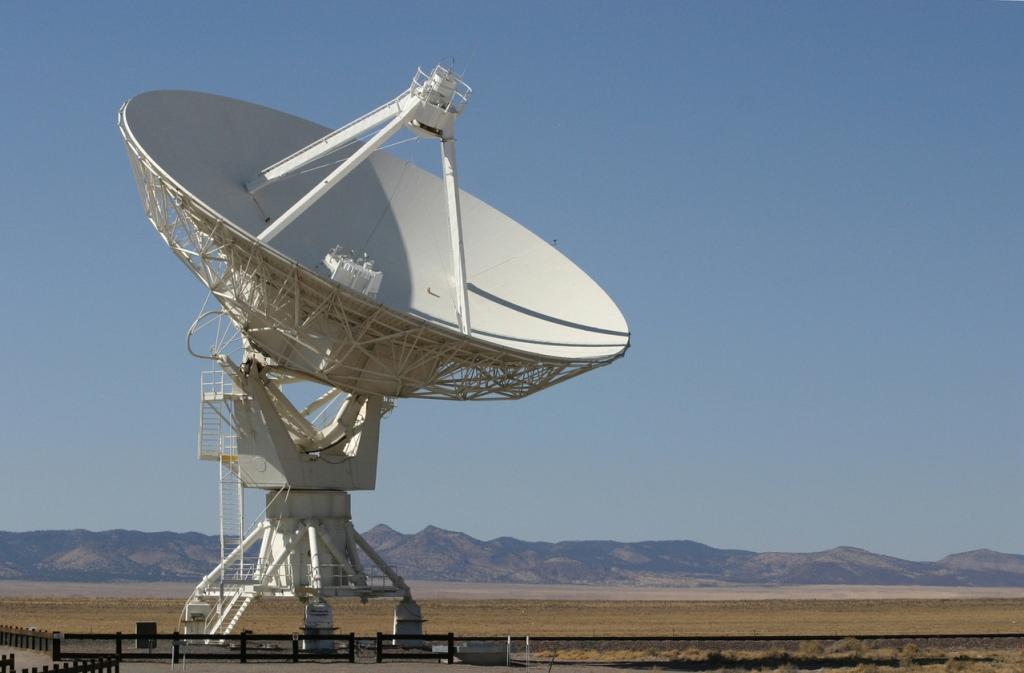The Iconic Very Large Array (VLA) Radio Telescopes
Earth’s Big Ear On Space
The Very Large Array (VLA) is an iconic collection of 27 radio astronomy dishes arranged in a ‘Y’ shape high in the New Mexico desert of the United States. Since its completion at the end of the 1970’s, astronomers have made some key discoveries about objects in the cosmos and the collection of telescopes has featured in several high profile movies such as Contact and Terminator.
Interesting Fun Facts About The Very Large Array!
- Choosing the location of radio telescopes is very important, firstly because cosmic radio waves are extremely faint (compared to man-made radio waves), so you need to be isolated from radio interference. Secondly, you ideally need to be located at altitude in a desert environment with low humidity as atmospheric water is a real problem in radio astronomy. This is why the VLA was located in central New Mexico at an elevation of 2124 m (6970 ft).
- Construction of the VLA began in 1973 with the complex completed in 1980 at an expense of US $80 million. At the time, it was the largest configuration of radio telescopes in the world.
- The 27 radio telescopes that make-up the VLA are 25 m (82 feet) in diameter and are arranged in a Y-shaped array and weigh a hefty 210 tonnes!
- The telescopes aren’t fixed in position but are mounted on railway tracks in the iconic “Y” shape. The railway tracks allow the arrangement (radius) to be altered so astronomers can adjust the balance between ‘zooming in’ and the brightness of the target object.
- The VLA telescopes observe in ‘centimeter-wavelength’ as opposed to the finer wavelength sensitivity of the ALMA in Chile.
- In 1989, as the Voyager 2 probe completed its flyby of Neptune, the VLA received the radio communications from its encounter.
- Astronomers can use the VLA for many purposes such as allowing the examination of many celestial objects including radio-emitting stars, quasars, pulsars, supernova remnants, gamma-ray bursts, the Sun, planets, black holes and the interstellar hydrogen gas that constitutes a large portion of the Milky Way galaxy as well as studying external galaxies.
- At one point the VLA was used as part of the SETI project.
- In the year 2000, a planned upgrade of the telescope's electronics begun and was completed a decade later at the same time the facility was renamed.
- In part because of its impressive, and iconic, appearance the VLA has appeared in TV programs and movies. Most famously it appeared in Carl Sagan's documentary Cosmos, Contact, the movie 2010: The Year We Make Contact and the science-fiction film Terminator Salvation.




Array Arm
Eyes on the Stars
Various Configurations
Giant Antenna



